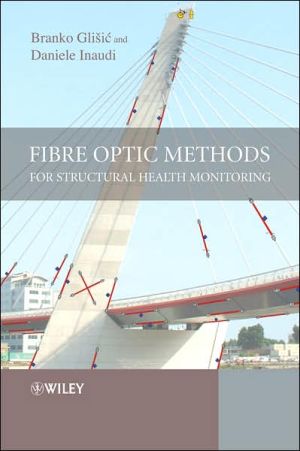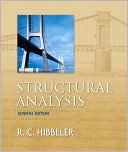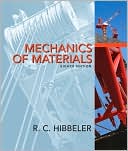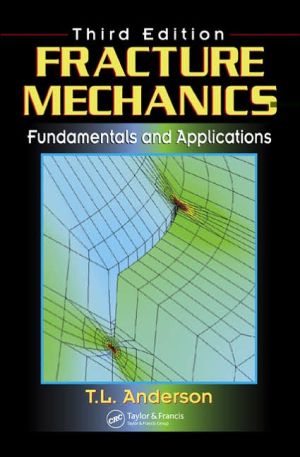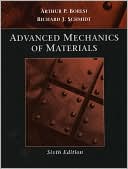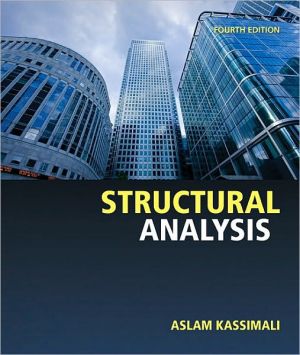Fibre Optic Methods for Structural Health Monitoring
The use of fibre optic sensors in structural health monitoring has rapidly accelerated in recent years. By embedding fibre optic sensors in structures (e.g. buildings, bridges and pipelines) it is possible to obtain real time data on structural changes such as stress or strain. Engineers use monitoring data to detect deviations from a structure’s original design performance in order to optimise the operation, repair and maintenance of a structure over time.\ Fibre Optic Methods for Structural...
Search in google:
The use of fibre optic sensors in structural health monitoring has rapidly accelerated in recent years. By embedding fibre optic sensors in structures (e.g. buildings, bridges and pipelines) it is possible to obtain real time data on structural changes such as stress or strain. Engineers use monitoring data to detect deviations from a structure’s original design performance in order to optimise the operation, repair and maintenance of a structure over time. Fibre Optic Methods for Structural Health Monitoring is organised as a step-by-step guide to implementing a monitoring system and includes examples of common structures and their most-frequently monitored parameters. This book: presents a universal method for static structural health monitoring, using a technique with proven effectiveness in hundreds of applications worldwide; discusses a variety of different structures including buildings, bridges, dams, tunnels and pipelines; features case studies which describe common problems and offer solutions to those problems; provides advice on establishing mechanical parameters to monitor (including deformations, rotations and displacements) and on placing sensors to achieve monitoring objectives; identifies methods for interpreting data according to construction material and shows how to apply numerical concepts and formulae to data in order to inform decision making. Fibre Optic Methods for Structural Health Monitoring is an invaluable reference for practising engineers in the fields of civil, structural and geotechnical engineering. It will also be of interest to academics and undergraduate/graduate studentsstudying civil and structural engineering.
Foreword xiPreface xiiiAcknowledgments xvIntroduction to Structural Health Monitoring 1Basic Notions, Needs and Benefits 1Introduction 1Basic Notions 2Monitoring Needs and Benefits 3Whole Lifespan Monitoring 4The Structural Health Monitoring Process 5Core Activities 5Actors 10On-Site Example of Structural Health Monitoring Project 10Fibre-Optic Sensors 19Introduction to Fibre-Optic Technology 19Fibre-Optic Sensing Technologies 21SOFO Interferometric Sensors 22Fabry-Perot Interferometric Sensors 24Fibre Bragg-Grating Sensors 25Distributed Brillouin- and Raman-Scattering Sensors 27Sensor Packaging 30Distributed Sensing Cables 34Introduction 34Temperature-Sensing Cable 35Strain-Sensing Tape: SMARTape 36Combined Strain- and Temperature-Sensing: SMARTprofile 37Software and System Integration 37Conclusions andSummary 39Fibre-Optic Deformation Sensors: Applicability and Interpretation of Measurements 41Strain Components and Strain Time Evolution 41Basic Notions 41Elastic and Plastic Structural Strain 44Thermal Strain 47Creep 48Shrinkage 50Reference Time and Reference Measurement 51Sensor Gauge Length and Measurement 52Introduction 52Deformation Sensor Measurements 53Global Structural Monitoring: Basic Notions 55Sensor Measurement Dependence on Strain Distribution: Maximal Gauge Length 57Sensor Measurement in Inhomogeneous Materials: Minimal-Gauge Length 62General Principle in the Determination of Sensor Gauge Length 65Distributed Strain Sensor Measurement 65Interpretation of strain measurement 67Introduction 61Sources of Errors and Detection of Anomalous Structural Condition 67Determination of Strain Components and Stress from Total-Strain Measurement 72Example of Strain Measurement Interpretation 77Sensor Topologies: Monitoring Global Parameters 83Finite Element Structural Health Monitoring Concept: Introduction 83Simple Topology and Applications 84Basic Notions on Simple Topology 84Enchained Simple Topology 85Example of an Enchained Simple Topology Application 87Scattered Simple Topology 94Example of a Scattered Simple Topology Application 97Parallel Topology 100Basic Notions on Parallel Topology: Uniaxial Bending 100Basic Notions on Parallel Topology: Biaxial Bending 105Deformed Shape and Displacement Diagram 107Examples of Parallel Topology Application 111Crossed Topology 118Basic Notions on Crossed Topology: Planar Case 118Basic Notions on Crossed Topology: Spatial Case 119Example of a Crossed Topology Application 122Triangular Topology 125Basic Notions on Triangular Topology 125Scattered and Spread Triangular Topologies 127Monitoring of Planar Relative Movements Between Two Blocks 129Example of a Triangular Topology Application 130Finite Element Structural Health Monitoring Strategies and Application Examples 133Introduction 133Monitoring of Pile Foundations 134Monitoring the Pile 134Monitoring a Group of Piles 137Monitoring of Foundation Slab 139On-Site Example of Piles Monitoring 140Monitoring of Buildings 141Monitoring of Building Structural Members 141Monitoring of Columns 142Monitoring of Cores 145Monitoring of Frames, Slabs and Walls 148Monitoring of a Whole Building 149On-Site Example of Building Monitoring 150Monitoring of Bridges 155Introduction 155Monitoring of a Simple Beam 155On-Site Example of Monitoring of a Simple Beam 158Monitoring of a Continuous Girder 166On-Site Example of Monitoring of a Continuous Girder 168Monitoring of a Balanced Cantilever Bridge 173On-Site Example of Monitoring of a Balanced Cantilever Girder 174Monitoring of an Arch Bridge 180On-Site Example of Monitoring of an Arch Bridge 181Monitoring of a Cable-Stayed Bridge 187On-Site Example of Monitoring of a Cable-Stayed Bridge 190Monitoring of a Suspended Bridge 194Bridge Integrity Monitoring 196On-Site Example of Bridge Integrity Monitoring 197Monitoring of Dams 201Introduction 201Monitoring of an Arch Dam 202On-Site Examples on Monitoring of an Arch Dam 205Monitoring of a Gravity Dam 210On-Site Example of Monitoring a Gravity Dam 212Monitoring of a Dyke (Earth or Rockfill Dam) 215On-Site Example of Monitoring a Dyke 216Monitoring of Tunnels 218Introduction 218Monitoring of Convergence 219On-Site Example of Monitoring of Convergence 222Monitoring of Strain and Deformation 223On-Site Example of Monitoring of Deformation 225Monitoring of Other Parameters and Tunnel Integrity Monitoring 228Monitoring of Heritage Structures 229Introduction 229Monitoring of San Vigilio Church, Gandria, Switzerland 230Monitoring of Royal Villa, Monza, Italy 232Monitoring of Bolshoi Moskvoretskiy Bridge, Moscow, Russia 234Monitoring of Pipelines 235Introduction 235Pipeline Monitoring 236Pipeline Monitoring Application Examples 237Conclusions 247Conclusions and Outlook 251Conclusions 251Outlook 252References 253Index 257
\ From the Publisher"In summary, I'm delighted with the book as a source of well balanced practical information about an exciting technology." (Geotechnical News, 1 June 2008)\ "In conclusion, the book is useful for understanding one of the technology of structural monitoring for Civil Engineering applications today available on the market. But, even more important, the book represents a good guideline for sensor placement and performance reconstruction from boundary (i.e. not internal to the structural body) measurements." (Structural Control Health Monitoring, 2010)\ "This makes the book extremely useful for structural inspectors who need to understand the condition of civil structures from a structural perspective ... Based on this, it can help them to reach correct evaluations of the true condition of the structures, and in turn helps them make effective decisions on the final fate of these structures." (Can. J. Civ. Eng., 19 February 2008)\ "In a nutshell, this book is recommended as a good reference and source of valuable information for basic and applied principles in long gauge deformation sensing. It embodies the valuable field experiences of the authors for sensor placement and interpretation of data. It is also written in a simple format and without very much of rigor for non-optical physics majors." (Structure and Infrastructure Engineering, 1 October 2009)\ "Overall the Book is organised so that it can be used as a step-by-step guide to implement a monitoring system and includes numerous application examples on the most common types of structures, such as building, bridges, historical monuments, piles, dams, tunnels, pipelines, risers, and off-shore structures, and their most frequently monitored parameters." (TMCnet.com, 17 March 2011)\ "...I recommend that you tell your structural engineering colleagues about it…. I’m delighted with the book as a source of well balanced practical information about an exciting technology." (Geotechnical News, June 2008)\ \ \
